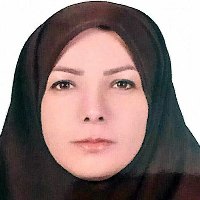Explaining the Revitalization of Historical Areas in Shiraz with a Foresight Approach
This study aimed to revitalize the historical districts of Shiraz using a foresight methodology, with a focus on the year 2051.
Conducted in 2023 (1402 in the Islamic calendar), the research employed a foresight approach to analyze Shiraz's historical areas. A researcher-developed questionnaire was utilized for data collection, beginning with a review of existing literature to identify key indicators affecting the revitalization process. These indicators were used to design the research questionnaire, which was validated using the Delphi method. The study's sample consisted of 30 experts in urban planning, selected through purposive sampling. To assess the key driving forces, foresight tools such as MicMac and Scenario Wizard were applied.
Fourteen significant factors impacting the revitalization of Shiraz's historical fabric were identified, including the degradation of historically significant buildings, limited financial resources for restoration, declining public appreciation of historical buildings, and the underutilization of tourist attractions in these areas. Among the six potential scenarios, the fourth scenario, which exhibited 13 favorable conditions, was deemed the most optimal, followed by the sixth scenario with 12 favorable conditions. The remaining scenarios (first, second, third, and fifth) were classified as critical due to their negative status. The fourth scenario, with a desirability score of 21.10, was the most advantageous, while the fifth scenario, with a critical rate of 33.33%, represented the worst-case scenario.
Six possible scenarios, each representing different combinations of favorable, static, and critical conditions, may arise in the revitalization of Shiraz's historical districts. The favorable condition is the most likely to occur, followed by the static state, with the critical condition being the least probable.
-
Develop a native model of a creative tourism city; Case study of Babolsar city
Nedabeygom Sharifian, *, Amir Gandomkar, Mohammad Masuod, Hamid Saberi
Quarterly of Geography (Regional Planing), -
Investigating the factors affecting the socio-economic resilience of cities in the face of epidemics (case study: Shiraz city)
Mohammadreza Zamani, *, Zeinab Talebi
Research and Urban Planning,



